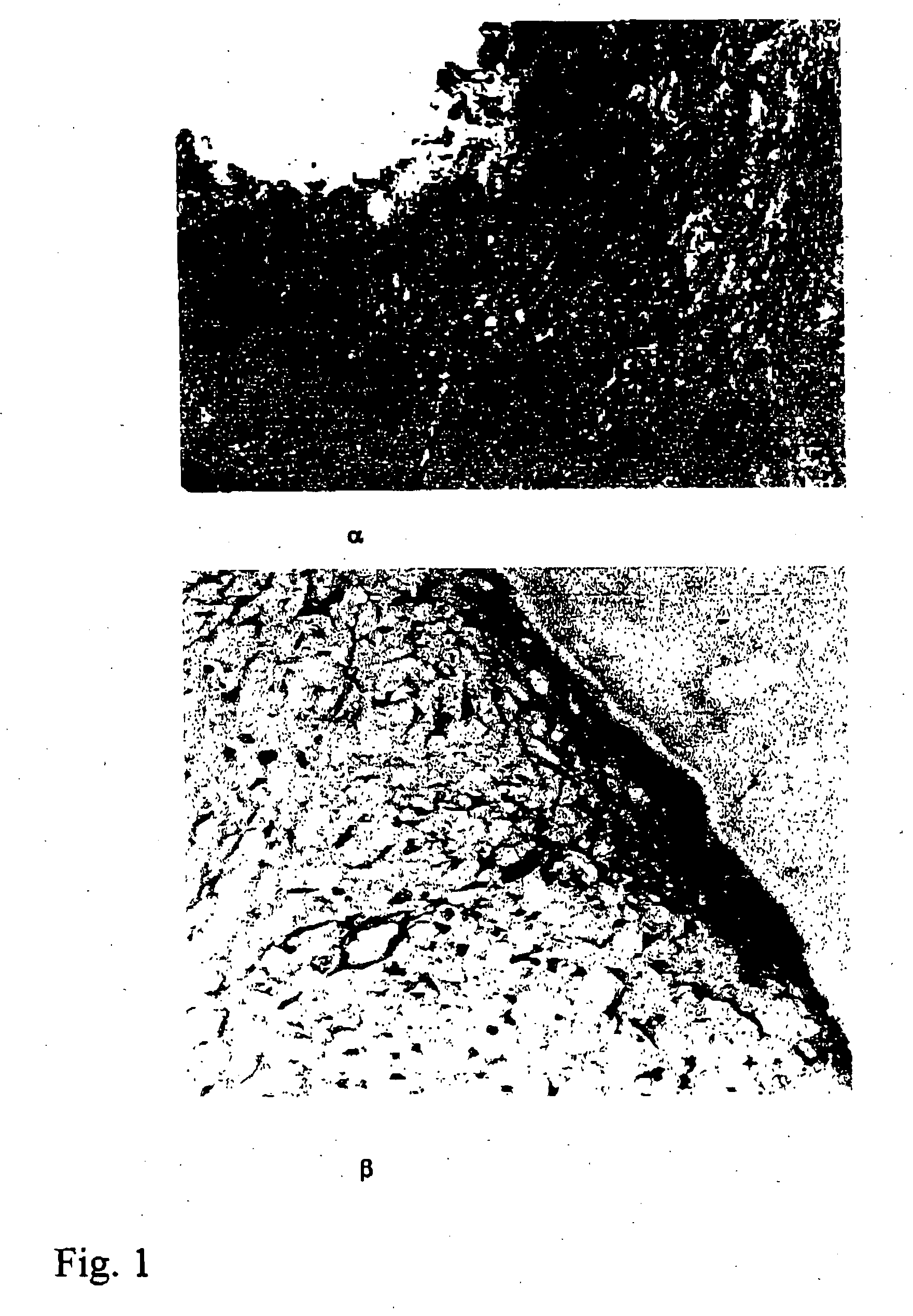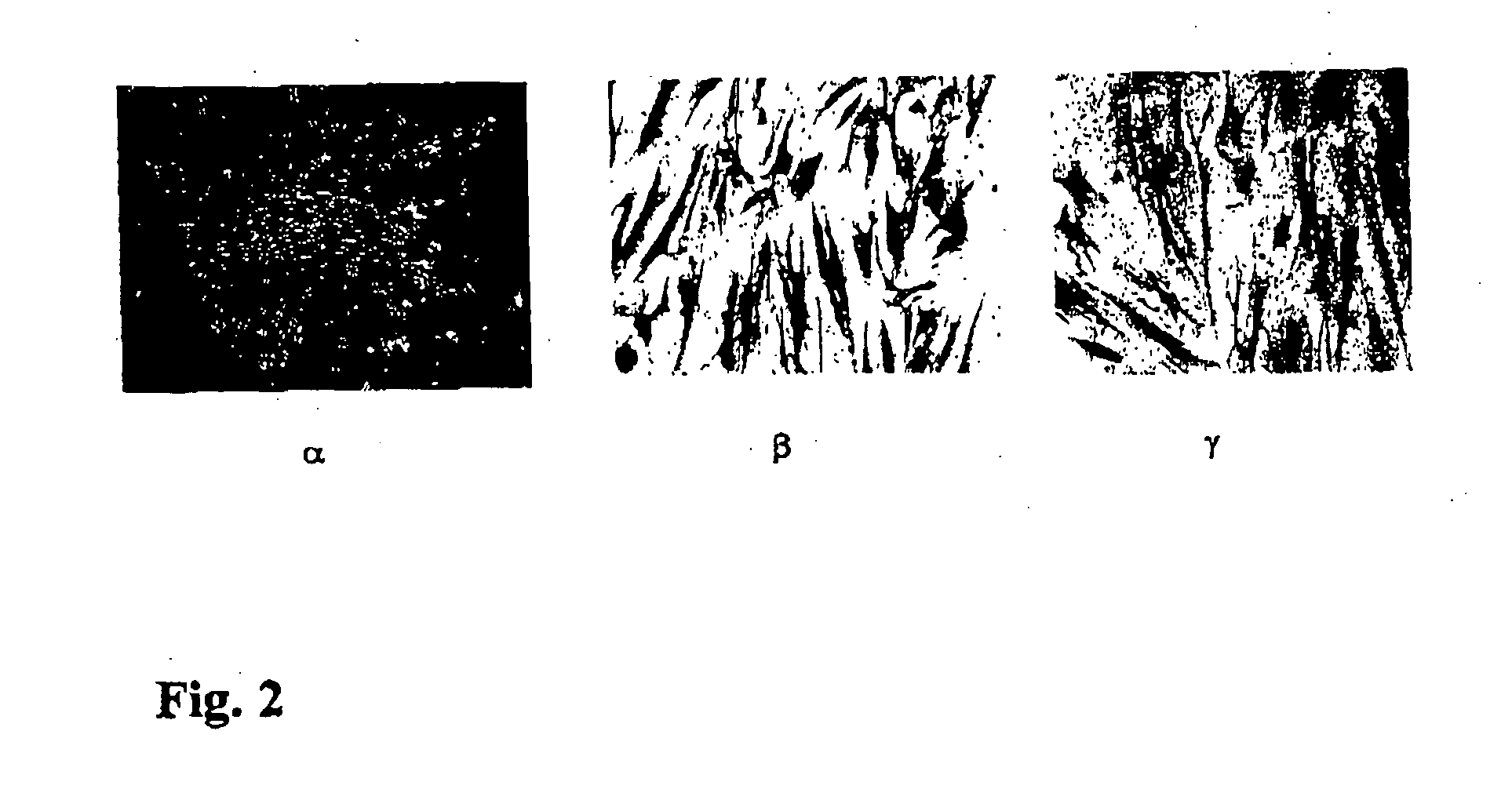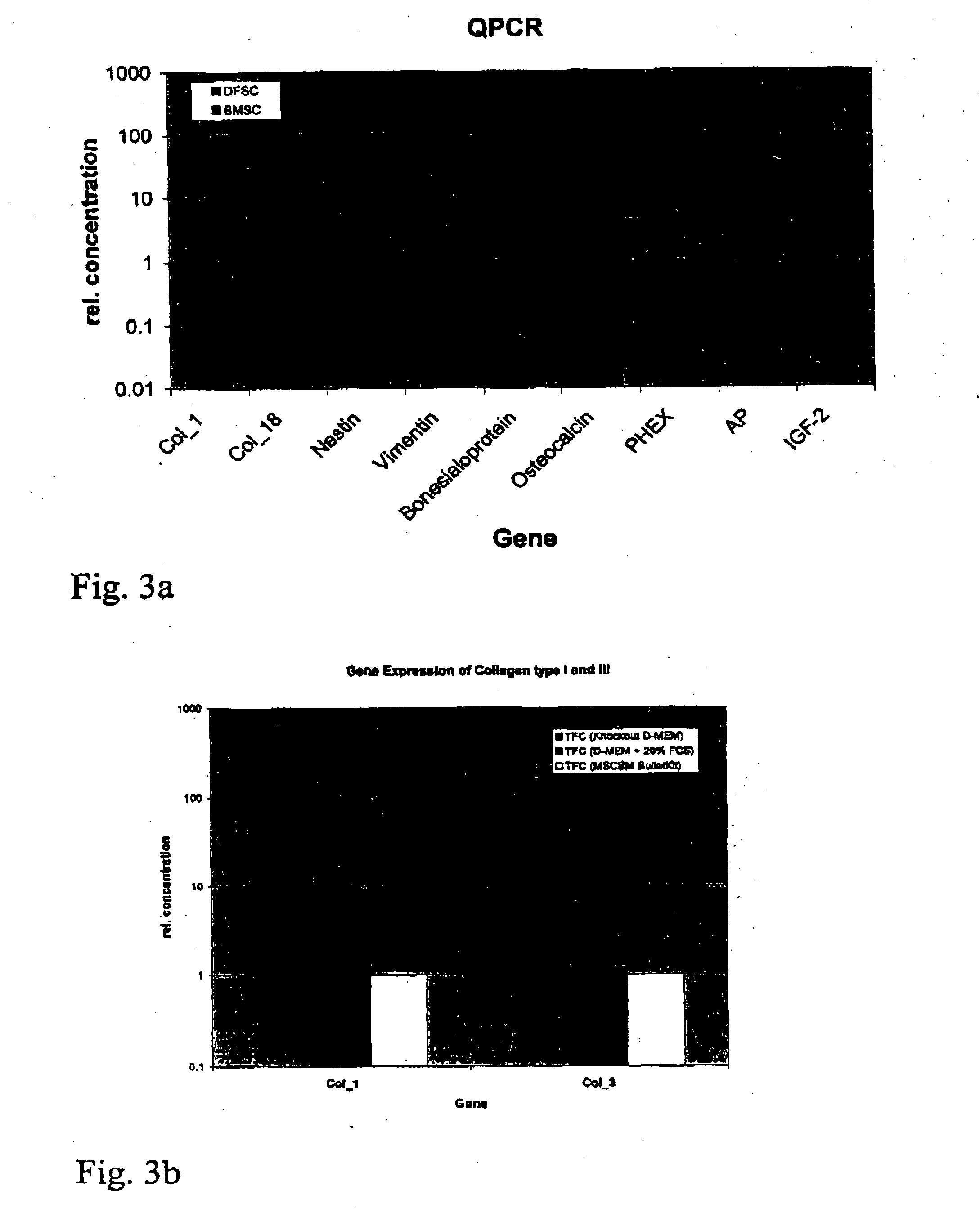Pluripotent embryonic-like stem cells derived from teeth and uses thereof
a stem cell and embryonic technology, applied in the field of embryonic-like stem cells derived from teeth, can solve the problems of reducing the ability to regenerate most human tissues damaged or lost due to trauma or disease in adults, and achieve the effects of stimulating phenotypic expression, increasing the number of differentiated types, and specialized functions
- Summary
- Abstract
- Description
- Claims
- Application Information
AI Technical Summary
Benefits of technology
Problems solved by technology
Method used
Image
Examples
examples
Tissue Engineered on Biodegradable Polymer Scaffolds
[0242] We fabricated biodegradable scaffolds in the shape of human molars, seeded them with stem cells derived from stem cells cultured in D-MEM serumreplacement media (GIBCO / BRL) supplemented with 2 mM L-glutamine / 100 units / ml penicillin / 100 μg / ml streptomycin (Biofldids, Rockville, Md.), and implanted the cell / polymer constructs in a cell rotation reactor type from Syntecon, Rotary Cell Culture System RCCS-D, with 50 ml vessel (D-405). A microporous PLLA cell / polymer construct isolated 6 weeks post-implantation had a cell layer adjacent to the polymer.
[0243] Our approach for future therapeutic application is the transplantation of resorbable polymeric scaffolds colonized with stem cells for the periodontium or bone tissue.
[0244] We investigated biochemical and physicochemical parameters of two different polylactid polymer matrices (PLLA, RG 207 Boehringer Ingelheim FRG): biocompatibility, growth of periodontal cells, degradat...
PUM
| Property | Measurement | Unit |
|---|---|---|
| temperature | aaaaa | aaaaa |
| pH | aaaaa | aaaaa |
| clonal density | aaaaa | aaaaa |
Abstract
Description
Claims
Application Information
 Login to View More
Login to View More - R&D
- Intellectual Property
- Life Sciences
- Materials
- Tech Scout
- Unparalleled Data Quality
- Higher Quality Content
- 60% Fewer Hallucinations
Browse by: Latest US Patents, China's latest patents, Technical Efficacy Thesaurus, Application Domain, Technology Topic, Popular Technical Reports.
© 2025 PatSnap. All rights reserved.Legal|Privacy policy|Modern Slavery Act Transparency Statement|Sitemap|About US| Contact US: help@patsnap.com



